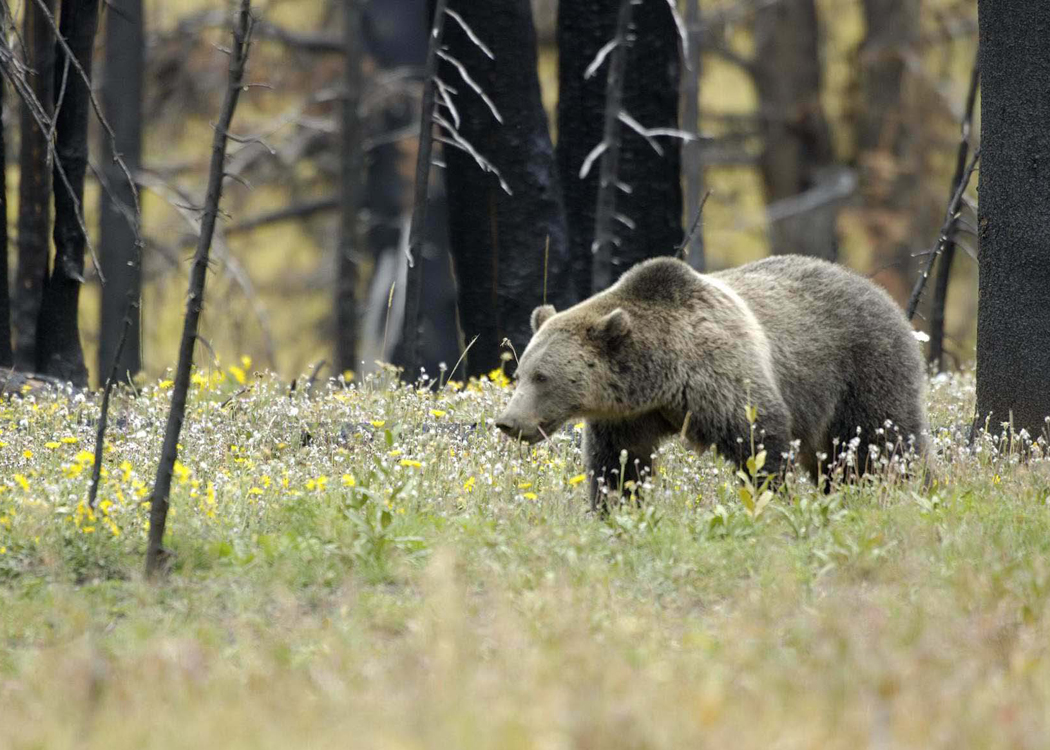Several years ago I had the pleasure of watching grizzly bears play and interact in Yellowstone National Park in Wyoming. Nothing could have prepared me for what it was like to see them in person. Documentaries and photos may offer a glimpse, but watching them up close was a moment I will always treasure.
I’m not alone in that feeling, either. Every year tourists flock to Yellowstone and surrounding areas to see grizzly bears (and the region’s many other fantastic animals and views) pumping billions of dollars into the local economy. Many tribes consider these majestic bears sacred, and several tribes have sued to defend them in court.
Unfortunately, these bears and many other animals currently on the endangered species list need our protection now more than ever. Interior Secretary Ryan Zinke has made clear that he’s more interested in protecting oil and gas companies than public lands, sacred places, or wildlife.
For example, grizzly bears are now literally caught in the crosshairs. Last summer, despite overwhelming opposition from the general public and dozens of Tribal nations, the Yellowstone grizzly bear population was removed from the endangered species Species list after more than 40 years of protection. Now Wyoming is planning a trophy hunt of these treasured bears. From my colleague Bonnie Rice, of the Sierra Club’s Greater Yellowstone campaign:
Wyoming has proposed a trophy hunt to eliminate 24 grizzly bears, including females, starting September 1, and will even allow baiting of grizzly bears in some areas. Except for a small buffer around the east side of Grand Teton National Park north of Jackson Hole, grizzly bears can be shot as soon as they step over Yellowstone and Grand Teton park boundaries. Wyoming's trophy hunt proposal is purposely designed to drive down the population and reduce grizzly bears’ range in Wyoming. The impacts of killing up to 14 females in one year could be catastrophic to any continued recovery; because they reproduce so slowly, it has taken 40 years of Endangered Species Act protection to increase the population by about 500 bears (the estimate is about 700 today).
Many Wyoming residents are now fighting this trophy hunting plan -- and many of them turned out at a final public hearing on Wednesday to voice their objections. (You can make your voice heard, too -- submit a comment now!)
Meanwhile, earlier this month, news leaked about an Interior Department plan to gut a key rule under the Endangered Species Act that protects threatened species from harm. That rule has protected iconic species like the northern spotted owl, Gunnison sage grouse and Mojave desert tortoise. If the rule is changed, new species listed as threatened will not automatically receive protection, leaving them vulnerable, especially in areas where key wildlife habitat crosses Zinke’s blind push to drill, mine, and frack.
Zinke also tanked a plan formed through local and national collaboration to protect the greater sage grouse. After years of planning by state and federal officials, environmental organizations, energy groups, and local landholders in ten states, the proposal has support from all levels and both sides of the political aisle. But when Zinke came into power in 2017, that all went down the drain, despite opposition from western Governors including Wyoming Republican Gov. Matt Mead. From Sierra magazine:
The Trump administration blew up all that hard work in June 2017, when Interior Secretary Ryan Zinke announced that the plans would be reviewed to ensure that "conservation efforts do not impede local economic opportunities." A month later, the Western Energy Alliance, an oil and gas industry trade group, sent Zinke a letter in which the word "burdensome" occurred seven times in four pages. When Zinke's review was completed in August, it included or addressed 13 of the alliance's 15 requests for changes, sometimes almost word for word.
What’s more, in true Trump administration fashion, Zinke appointed noted Endangered Species Act opponent Susan Combs as acting secretary for fish, wildlife, and parks. Combs is “a former Texas state official who compared proposed endangered species listings to ‘incoming Scud missiles’ and continued to fight the Endangered Species Act after she left government…”
From 1973 to 2013, the Endangered Species Act prevented extinction for 99 percent of species under its protection. It’s a proven successful standard, and these moves by Zinke will dramatically affect species across the U.S.
Instead of doing the bidding of his oil and gas buddies, we need Interior Secretary Zinke to listen to the people who overwhelmingly want endangered species protections for Yellowstone’s grizzlies and the many other animals threatened by destruction of habitat, trophy hunting, or other causes. He must put public lands above polluter profits.
